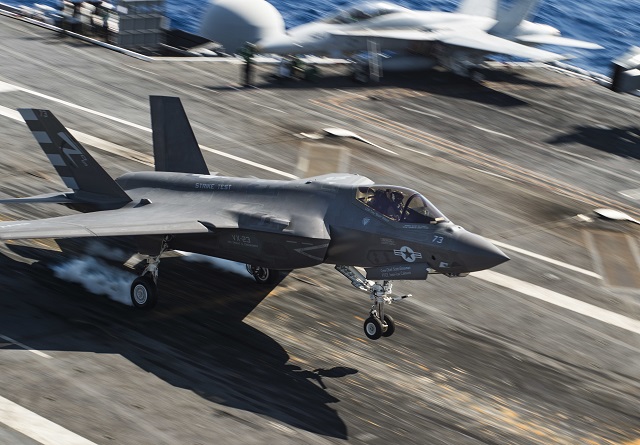The US Navy says maintaining Boeing F/A-18 Super Hornet production in St Louis is "vital" for overcoming a strike-fighter shortfall caused by delays in fielding the Lockheed Martin F-35C.
The navy says its legacy Hornet fleet is aging out faster than it can be replaced through overuse in lengthy campaigns in the Middle East. Now, it is three squadrons or about 35 aircraft short of its fleet requirement, and there aren't enough aircraft available for training and to maintain pilot proficiency. Similar problems are faced by the US Marine Corps as its Hornets and AV-8B Harrier IIs wear down.
Congress funded five Super Hornets and seven EA-18G Growlers in the fiscal year 2016 defence budget, throwing a much-needed lifeline to Boeing's production facility.
Today, navy air warfare division chief Rear Adm Michael Manazir tells a congressional hearing on naval strike fighters that the service needs another “16 Super Hornets or so” on top of an increase in F-35C procurement to fill the remaining gap.

US Navy
On 3 February, during a tour of Marine Corps Air Station Miramar in California, US defence secretary Ashton Carter confirmed the navy will request more F-35s and F/A-18s in next week's budget submission than previously planned. It will reportedly seek 10 more F-35Cs and 16 more F/A-18s over the next five years, as well as more F-35Bs for the marines.
“We're accelerating that buy and we're also accelerating or enhancing our buy of F/A-18s,” Carter says.
Manazir backed that up by saying the navy will buy the F-35C in greater numbers going forward and fund more F/A-18s.
“It is vital to maintain a viable line at St Louis for the Super Hornet for the near term here in order to get those numbers into the air wings and then to extend them through to the 2030s until we get to a predominance of F-35Cs,” he says. “The extra Super Hornets over the next several years covers the slide in initial operational capability of the F-35C to the right.”
Manazir calls the Super Hornet a “vastly capable” compliment to the stealthy F-35C and through life-extensions it will continue to operate well into the 2030s.
“The predominance in numbers until the mid-'30s is going to be in Super Hornets,” he says. “The complimentary capability of those Super Hornets along with the F-35C gives us our striking power and reach off the aircraft carrier.”
Source: FlightGlobal.com



















